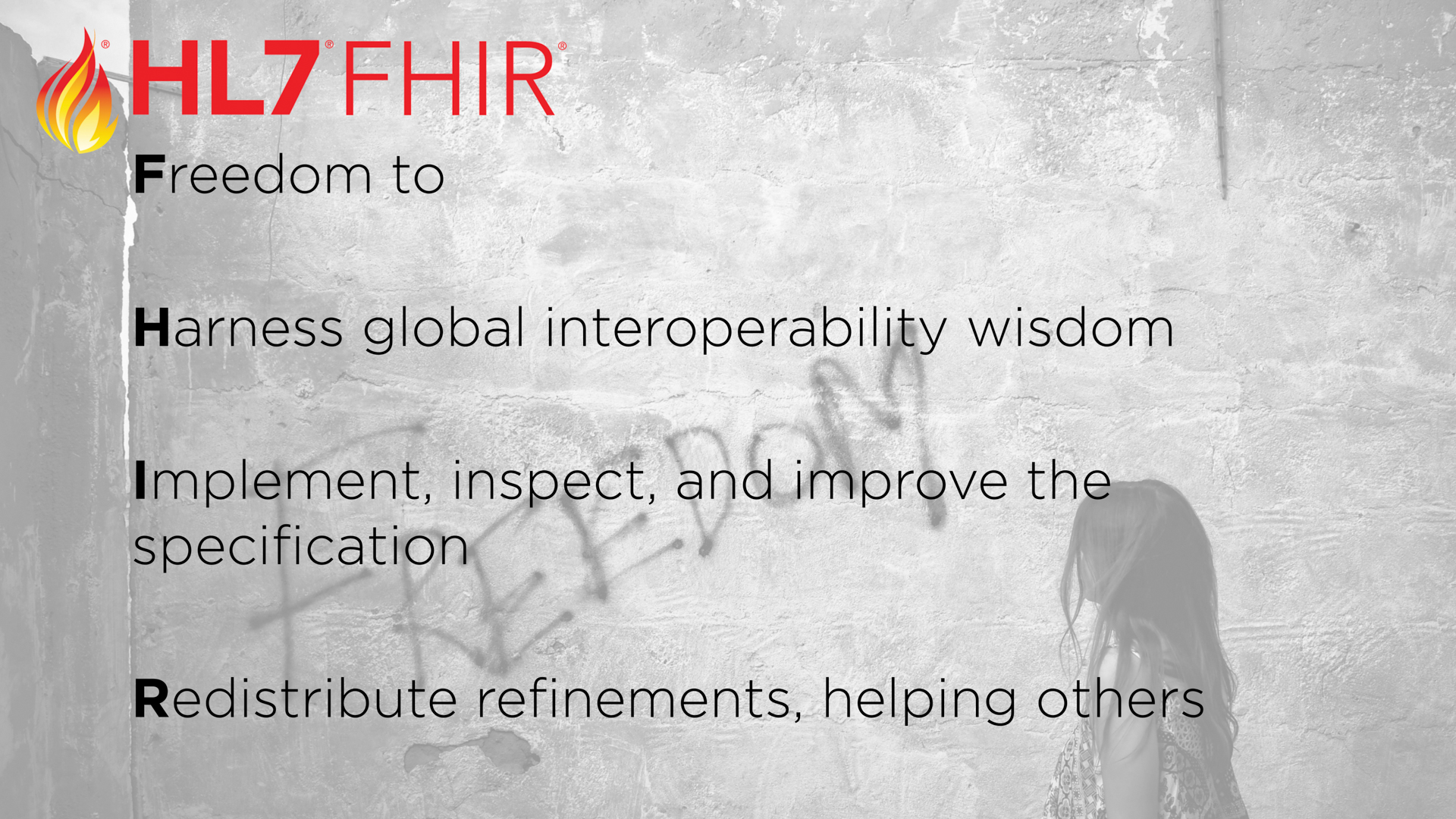In the United States, on the third Monday every January we honor American civil rights leader and Nobel Peace Prize winner Martin Luther King Jr.
Of course it was Dr. King who invoked the lyrics from that well known American anthem My Country, ‘Tis of Thee to so emphatically and powerfully implore us to “let freedom ring”.
Let freedom ring

Freedom from enables freedom to.
Freedom from poverty enables freedom to invest.
Freedom from oppression enables freedom to prosper.
Freedom from suppression enables freedom to create.
Perhaps you’re familiar with how our comrades in the open source software movement have championed for software that has four key freedoms, forming a sort of software bill of rights.
These freedoms are to:
- Run the program, for any purpose
- Study how the program works, and change it so it does your computing as you wish
- Redistribute copies
- Distribute copies of your modified versions, giving the community opportunity to benefit from your changes
Many in the healthcare industry know about HL7 International’s no-cost, open use IP policy for its standards, and how the HL7® FHIR® standard specifically has been placed in the public domain (under the CC0 license). That license means that anyone, anywhere is free to use HL7 FHIR however they wish.
Obviously, it means you don’t have to pay to access the FHIR standard. And certainly, most people appreciate that open standards liberate health data from the tyranny of proprietary formats and vendor lock-in. That’s all wonderful. But there’s more.
FHIR itself, as a bonafide global good, represents other kinds of freedoms. The freedoms enabled by FHIR reduce barriers to participation and opportunity around the world.
The official meaning of the FHIR acronym is Fast Healthcare Interoperability Resources.
But in my roles as Chief Standards Development Officer with HL7 International and President of the Board of Directors at the HL7 FHIR Foundation, I’ve come to appreciate an even bigger meaning of the acronym. I now see FHIR as:

It is the freedom to create. The freedom to build on. The freedom to change the world as it is now.
FHIR enables the freedom to create. The freedom to build on. The freedom to change the world as it is now.
And, from my perspective, this is the true beauty of FHIR.
As FHIR-based solutions are spreading both here in the US and around the world, we’re seeing these freedoms take flight.

For individuals, it can mean the freedom to have and to hold their health information in the app of their choice, and to share their health information with those that they choose.
For clinicians, it can mean the freedom to make sound judgements with more comprehensive information at hand, and to coordinate efficiently with others in the health ecosystem.
For informaticians and health IT developers, it can mean the freedom to create solutions for individuals, clinicians, payers, and governments using a common, vendor-neutral approach that’s been designed and tested by the world’s best experts in interoperability.
For government agencies, it can mean the freedom to optimize public health programs with the insights that come from better, faster, and more actionable data.
Life at its best is a creative synthesis of opposites in fruitful harmony.
Now many, including perhaps you, think that giving away your ideas, your source code, is utter foolishness (from a business sense). Yet I believe that HL7’s IP policy is a sign of a greater recognition: that the people who contribute their efforts to HL7 are the true “source” of our source code.
And therefore our “treasure” to protect is not the artifacts we produce, the specifications, but rather our community and our ways of orchestrating ourselves to produce consensus-based standards.
As Dr. King said on the first page of his book Strength to Love, “Life at its best is a creative synthesis of opposites in fruitful harmony”.

I believe that this kind of creative synthesis is the essence of HL7. These same ideals of openness and sharing are at the heart of how HL7 develops data standards that serve as foundations for innovation and digital transformation happening around the world.
So thank you to each of you who are contributing your unique perspective into this collective process.
Disclosure of Material Connection
Some of the links in the post above are “affiliate links.” This means if you click on the link and purchase the item, I will receive an affiliate commission. Regardless, I only recommend products or services I use personally and believe will add value to my readers. I am disclosing this in accordance with the Federal Trade Commission’s 16 CFR, Part 255: “Guides Concerning the Use of Endorsements and Testimonials in Advertising.”
